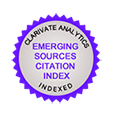Features of ellipsis usage in dialogical speech of English and Azerbaijani languages
Abstract
Ellipses are often used in written and lively spoken language, making the phenomenon a highly relevant subject of study. In the process of communicating with each other, people invariably face the need to shorten their remarks. The reasons for this can vary greatly: the interlocutors may be in a hurry to tell an interesting story, wish to make their speech easier for each other to understand, or want to recreate an informal atmosphere in a conversation. The problem of ellipsis has always aroused the interest of linguists. For many centuries, researchers have sought to explain this phenomenon, identify its main features, and propose a classification of elliptical sentences in various languages. Azerbaijani and foreign linguists have made significant progress on the issue, especially in the English language, although consensus is yet to be reached on many linguistic aspects of ellipsis. Considering the above, the main purpose of this article is to study the phenomenon of ellipsis from a theoretical and practical point of view and to consider the effect of ellipsis on the grammatical structure of sentences and its processing features in modern English and Azerbaijani dialogues.
Keywords: Ellipsis, Dialogical speech, Elliptical sentences, Complete sentences, Incomplete sentences.
Downloads
Published
How to Cite
Issue
Section
License
Copyright (c) 2024 Editorial "Universo Sur"

This work is licensed under a Creative Commons Attribution-NonCommercial-NoDerivatives 4.0 International License.
La editorial "Universo Sur", de la Universidad de Cienfuegos, publica el contenido de la Revista "Universidad y Sociedad" bajo una Licencia Creative Commons Atribución-NoComercial-SinDerivar 4.0 Internacional.
© Podrá reproducirse, de forma parcial o total, el contenido de esta publicación, siempre que se haga de forma literal y se mencione la fuente.










